Proving ground worth paying attention
Published on August 27th, 2020
To paraphrase Shakespeare, there’s a lot in our sport that’s Greek to us in North America, and the annual La Solitaire du Figaro in Europe is likely in that category. However, this four-leg solo 1830 nm race in the latest generation foil-equipped Figaro Bénéteau 3 is a fiercely competitive proving ground and worth paying attention.
As 36 skippers prepare for the start of the 642 nm Leg 1 on August 30, which takes the fleet from France’s Saint-Brieuc Bay around Ireland’s Fastnet Rack and back, the build-up for the 51st edition has not been simple.
While the coronavirus pandemic has seen the world grind to a halt, Alex Picot, Project Manager at La Solitaire du Figaro, considers the fulfillment of the race is as much about the organization as it is about the participants.
“It is incredible to see how attached and committed people are to this event,” said Picot. “They simply wanted a sporting goal to aim towards this year and a chance to race and asked us to do our best to try and manage a safe race for them.”
Recognized as the one of the most demanding offshore racing in the world, the field annually includes skippers with goals of pursuing the biggest event of them all, the Vendee Globe, but the 2020 race has brought back the winner of the last Vendée Globe (2016-2017), Armel le Cleac’h, who seeks his third win in the race (2003, 2010).
The 2020 race will include three classic stages of 500 miles or more, and one final 24-hour sprint. Having three different stopover territories, the Bay of Saint-Brieuc, Dunkirk, and the Loire-Atlantique in Saint-Nazaire, could have added complications to managing COVID-19 spread.
“The cities had a lot of things to consider,” admitted Picot. “On the one hand, they were concerned about their image, about organizing anything ‘non-essential’ and were thinking about relocating their investment for the new expenses they had induced due to the coronavirus pandemic.
“However, as with the skippers, they were dedicated and committed to this race and wanted to continue to be a part of it. They felt the need to be positive and give the participants and public something to look forward to following the last few months of lockdown whilst meeting the greater necessity to keep on supporting the attractiveness of their territories.
“Together we discussed the best solutions to ensure we could still hold this sporting event, whilst also abiding to the current regulations and ensuring that we protect the public. We will be ready to deliver the event in the best way possible whilst respecting the regulations, whatever they may be at the time and I am sure the cities, partners and athletes will be incredibly proud of the outcome.”
Picot is confident the 51st edition will be just as unforgettable as any of the previous races. “From a sporting point of view, we have four beautiful legs, an incredible casting of the best solo sailors, and all the ingredients that make this race a classic.
“It is an open course with the solo skippers having to find their own strategy and battle with all the usual challenges – wind, tide, lack of sleep, and racing neck on neck. On shore, it will be different for sure but in a way that I am sure we will all remember.”
Race details – Skippers – Facebook
Analysis of the race course by the Race Director:
Leg 1: a 642 mile voyage to the Fastnet and back (August 30 to September 2)

“The only waypoint in this first long leg will be the Fastnet Rock, which they will have to leave to starboard. It is going to be very open for the solo sailors from the start, with everyone attempting to find the right tactics and avoid the traps in the Channel and Celtic Sea,” explained Francis Le Goff. Once they have left Saint-Brieuc Bay, the skippers will head for Ireland while avoiding the rocks around the Isles of Scilly and respecting the various shipping lanes (TSS) to the West of Cornwall on the way out and back. Anything is possible. They can go inside or outside the islands, so we can look forward to an exciting tactical game…
Leg 2: 497 miles to Dunkirk via the English coast (September 6 to 9)

They will have to watch out for all the shipping and sandbanks. “From Saint-Quay-Portrieux, the fleet will head for the Wolf Rock to the South West of Land’s End, and then make their way towards a waypoint close to Antifer light near Etretat before heading for the finish off Dunkirk. In this leg, they are going to have to make sure they are able to remain alert and focused over the final miles. “This is a leg, where keeping a clear head for the final few miles will be key to the outcome,” explained Francis Le Goff. In this second leg, it will all be very open between Wolf Rock and the Alabaster Coast of Normandy, but there will also be a lot of traps lying in store, such as the TSS, which means the room for manoeuvre will be limited all the way to Dunkirk. There is all the cross-Channel shipping between Calais and Dover, and then the tidal currents and sandbanks all the way to the finish. They will have to manage their sleep and that is going to be vital in this leg for them to be able to stay fresh for the final stretch…
Leg 3: a 504 mile coastal leg from Dunkirk to Saint-Nazaire (September 12 to 15)

There are going to be some great sights along the way in this third leg with a wide range of backdrops. The Opal, Alabaster, Mother-of-pearl coasts of Normandy and the Pink Granite coast and craggy cliffs at the tip of Brittany, the Megalithic Coast of Southern Brittany, the Love Coast and Jade Coast of the Loire Estauary area. So many brilliant things to see, yet the leg is full of hurdles: tricky headlands and capes, tidal currents, islands and rocks, fishermen… 500 miles of high-tension sailing, with one eye on the charts, and the other on the sails with some sleepless nights ahead.
Leg 4: a 24 hour and 183 mile sprint between the islands for the Grand Finale (September 19 to 20)

After three hard, testing stages, the solo sailors will have to draw deeply on their reserves for for 24 hours of racing, a loop which should take them between the Ile d’Yeu and Belle-Île via the Ile de Groix before seeing them return to the Loire-Atlantique to crown the big winner of this 51st edition which promises to be full of twists and turns.
Source: La Solitaire du Figaro


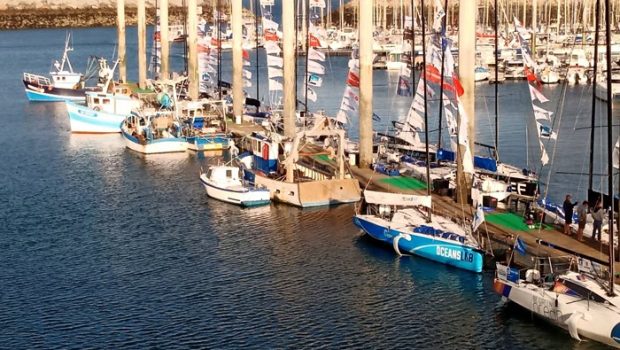


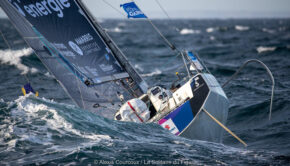
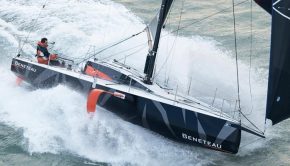
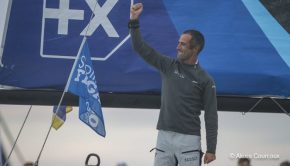
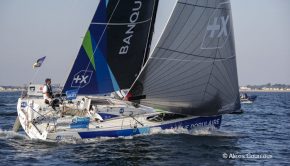
 We’ll keep your information safe.
We’ll keep your information safe.